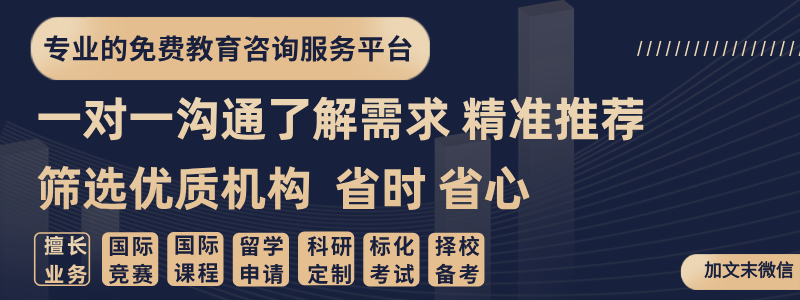經濟學是A-level大熱門科目之一,主要由於(yu) 經濟學在金融、政治、行政等各個(ge) 領域都能得到廣泛的應用,在就業(ye) 前景方麵也是一片光明,這也吸引了越來越多的同學一頭紮進了A-level經濟的懷抱。
但是呢,學起來卻沒那麽(me) 簡單.....
“不選不行,選了痛苦”成了很多同學們(men) 日後學習(xi) 的真實寫(xie) 照。作為(wei) 過來人,小編認為(wei) ,A-level經濟有一個(ge) 難點是,知識運用於(yu) 實際分析,所以就算記住所有的概念和原理,不懂得運用的套路,也不一定能獲得高分。
而宏觀經濟學和微觀經濟學雜糅,使得沒有經濟學習(xi) 基礎的同學很難將其分開並進行直觀總結。
今天,小編就以CIE和愛德思這兩(liang) 個(ge) 考試局角度,來說一說A-level經濟:
CIE
AS階段大綱
1、Basic economic ideas and resource allocation 基本經濟觀點與(yu) 資源分配
Session1: Scarce 稀缺
Session2: Choice and opportunity cost 選擇和機會(hui) 成本
Session3: Empirical and normative statements 實證性和規範性的陳述
Session4: Production factors 生產(chan) 要素
Session5: Resource allocation in the transfor-
mation of different economic 不同經濟係統與(yu) 問題轉變中的資源分配
Session6: Classification of production
possibility curve, capital, goods and services
生產(chan) 可能性曲線、資金、貨物與(yu) 服務的分類
2、The price system and the micro economy 價(jia) 值體(ti) 係與(yu) 微觀經濟
Session7: Price elasticity of supply &demand curve 供需曲線價(jia) 格彈性
Session8: Income elasticity & cross elasticity &cross of demand 收入彈性需求交叉彈性
Session9: Price elasticity of supply 供給的價(jia) 格彈性
Session10: The relationship between supply and demand 供求的相互關(guan) 係
Session11: The relationship between supply and demand 市場的均衡與(yu) 不均衡
Session12: Consumer surplus and producer surplus 消費者剩餘(yu) 和生產(chan) 者剩餘(yu)
3、Government Microeconomic intervention 政府微觀經濟幹預
Session13: The highest and lowest price 最高與(yu) 最低價(jia) 格
Session14: Tax (direct and indirect) 稅收(直接與(yu) 間接)
Session15: Subsidies 補貼
Session16: Transfer payment 轉移支付
Session17: Direct supply of goods and services 貨物服務的直接供應
Session18: Nationalization &privatization 國有化與(yu) 私有化
4、The macro economy 宏觀經濟
Session19: Analysis of total demand and total supply 總需求量與(yu) 總供給量分析
Session20: Inflation 通貨膨脹
Session21: International balance of payments 國際收支平衡
Session22: Exchange rate 匯率
Session23: Terms of trade 貿易條件
Session24: The principle of absolute advantage and comparative advantage 絕對優(you) 勢與(yu) 相對優(you) 勢原則
Session25: Trade protectionism 貿易保護主義(yi)
5、Government macro intervention 政府宏觀幹預
Session26: Types of policies 政策種類
Session27: Financial policy 財政政策
Session28: Monetary policy 貨幣政策
Session29: Supply policy 供給政策
Session30: Unbalanced balance of Payments Policy 國際收支偏差平衡政策
Session31: Inflation and deflation adjustment policies 通貨膨脹與(yu) 通貨緊縮調整政策:
Session32: Mock exam 模擬考試
Session33: Past paper review 過去的論文回顧
AS考試難點
AS Paper1要在熟悉知識點體(ti) 係後刷理念的真題,每套正式考試中可能會(hui) 有一些很類似的題,很多時候光複習(xi) 知識點是不夠的,需要從(cong) 題目中找到做題的感覺,並總結錯題。
AS的論文一般可以選擇基本經濟知識的內(nei) 容(微觀),重點考的essay常常和經濟體(ti) 係、merit/demerit/public goods、彈性和政府微觀幹預有關(guan) ,出題比較明確。宏觀部分的essay常考某一個(ge) 現象的起因,後果和可幹預的政府宏觀策略,如通貨膨脹,會(hui) 考察學生整體(ti) 的知識運用能力和邏輯思維能力,會(hui) 比較有難度。複習(xi) 的時候既要熟悉知識點,充足自己的素材庫,也需要找準題目意思對症下藥地去寫(xie) 。
A2階段大綱
1、Basic economic ideas and resource allocation 基本經濟觀點與(yu) 資源分配
Session1: Effective allocation of external effects & market failure 有效配置外部效應與(yu) 市場失靈
Session:2: Social costs and benefits 社會(hui) 成本和效益
Session3: Cost benefit analysis 成本效益分析
2、The price system and the micro economy價(jia) 值體(ti) 係與(yu) 微觀經濟
Session4: Law of diminishing marginal utility 邊際效用遞減規律
Session5: Indifference curve 無差異曲線
Session6: Budget line 預算線
Session7: consumption 消費
Session8: Tax and profit classification 稅收與(yu) 利潤的分類
Session9: Short term production and long term production 短期成產(chan) 與(yu) 長期生產(chan)
Session10: Different market structures 不同市場結構
Session11: Growth and survival of the company 公司的成長與(yu) 生存
Session12: Different goals of the company 公司的不同目標
3、Government Microeconomic intervention 政府微觀經濟幹預
Session13: Effective resource allocation and correct market failure policy 有效資源配置與(yu) 正確市場失靈的政策
Session14: Fairness and policy of income and wealth redistribution 收入與(yu) 財富重新分配的公平與(yu) 政策
Session15: Market labor and government intervention (supply and demand of labor, wage decision of perfect market, wage decision of imperfect market),市場勞動力與(yu) 政府幹預(勞動力的供需、完美市場的工資決(jue) 定、不完美市場的工資決(jue) 定)
Session16: Government failure in
microeconomic intervention 微觀經濟幹預中的政府失敗
4、The macro economy 宏觀經濟
Session17: Economic growth 經濟增長
Session18: Economic development and
Sustainability 經濟發展與(yu) 可持續性
Session19: National income statistics 國民收入統計
Session20: Country classification 國家分類
Session21: Employment and unemployment 就業(ye) 與(yu) 失業(ye)
Session22: Circulation of income 收入的循環流動
Session23: Money supply theory 貨幣供應理論
Session24: Keynesian theory and Monetary School 凱恩斯理論與(yu) 貨幣學派
Session25: Money demand and interest rate determination 貨幣需求量與(yu) 利率決(jue) 定
Session26: Developing economic policy 發展中經濟政策
Session27: Trade policy and aid 貿易政策與(yu) 援助
5、Government macro intervention 政府宏觀幹預
Session28: Government macro policy
objectives 政府宏觀政策目標
Session29: Problem connectivity 問題互聯性
Session30: Effectiveness of policy options that meet all macroeconomic objectives 所有宏觀經濟目標的相對應政策選擇的有效性
Session31: Mock exam 模擬考試
Session33: Past paper review 過去的論文回顧
A2考試難點
A2 Paper3和AS Paper1一樣,要在熟悉知識點體(ti) 係後刷理念的真題,需要從(cong) 題目中找到做題的感覺,並總結錯題。
相比AS Paper2,A2的Paper4不僅(jin) 難度增大,時間也會(hui) 更不足,雖然每年的題目形式都差不多,但這是大論文,要寫(xie) 的內(nei) 容會(hui) 比較多。想在Paper4拿到A需要大概42分左右(滿分60),乍一看好像很簡單,但是考官對於(yu) essay的打分非常嚴(yan) 格,最後拿到高分的同學是極少數,需要同學們(men) 注意結構和邏輯,在平時練習(xi) 的時候就注意培養(yang) 和開拓自己辯證思考問題的能力。
那麽(me) ,CIE的AS和A2包含哪些題型呢?
AS部分
Paper1:選擇題30道,1題1分,在最終的AS成績中占33%;
Paper2:由A部分數據分析和B、C部分論文組成,在最終的AS成績中占67%;論文為(wei) 4選2,每道題由(a)問和(b)問組成:
(a)問:8分,一般隻需要解釋(Explain)題目給出的理論;
(b)問:12分,要求討論(Discuss)某個(ge) 觀點,需要evaluate。
A2部分
Paper3:與(yu) Paper1的組成一樣,有30道選擇題;
Paper4:中A部分也是一道數據分析,閱讀的篇幅比P2要大B.C部分的論文是6選2,每組題總分25分,可分成12+13分。
最終A-Level成績組成:AS(50%)+A2(50%)
愛德思
IAL經濟大綱
Unit 1: Markets in action 市場活動
主要是關(guan) 於(yu) 經濟學本質與(yu) 價(jia) 格機製是如何在當地、國家和全球市場範圍調節資源分配的。這一部分內(nei) 容的學習(xi) 包括基本概念的介紹、消費者行為(wei) 與(yu) 需求、供給、價(jia) 格決(jue) 定、市場失靈、政府的市場幹預。
Unit 2: Macroeconomic performance and policy 宏觀經濟表現和政策
介紹了經濟表現的主要衡量方法,還有國際化背景下的主要目標和經濟政策工具。這一部分的內(nei) 容包括經濟表現的衡量方法、總需求量、總供給量、國民收入、經濟增長、宏觀經濟目標與(yu) 政策。
Unit 3: Business behavior 商業(ye) 行為(wei)
是Unit 1 內(nei) 容的延伸,並且檢驗了公司間的競爭(zheng) 如何受到市場參與(yu) 者的數量與(yu) 規模的影響,最後學生應該有能力分析與(yu) 評估不同背景下公司的定價(jia) 與(yu) 產(chan) 出決(jue) 策,了解競爭(zheng) 在商業(ye) 決(jue) 策中的角色。這部分的內(nei) 容包括經濟表現的衡量方法、稅收、消費與(yu) 利潤、市場結構與(yu) 可競爭(zheng) 性、勞動力市場、政府幹預。
Unit 4: Developments in the global economy 全球經濟發展
是Unit 2 知識和能力的擴展與(yu) 延伸,要求學生可以運用、分析和評估經濟模型、同時能夠評估可能用於(yu) 解決(jue) 經濟問題的政策可行性。這部分的學習(xi) 包括全球化的原因和影響、貿易與(yu) 全球經濟、國際收支平衡、匯率與(yu) 國際競爭(zheng) 、貧窮與(yu) 不公平、國家在宏觀經濟中的角色,發展中、新興(xing) 、發達經濟體(ti) 的成長與(yu) 發展。
愛德思經濟考試分為(wei) 哪幾部分?
小編為(wei) 大家整理了一份有關(guan) 愛德思經濟考試中分支、題型、占比的圖,有需要的夥(huo) 伴歡迎收藏哦~(點開大圖更高清)

CIE和愛德思最大的區別是?
不同的考試局對於(yu) 能力的考察側(ce) 重也不同,學生需要具備能力主要分為(wei) 詞匯量、閱讀能力、邏輯能力、寫(xie) 作能力。
一般來說,CIE的詞匯量和閱讀能力的要求會(hui) 更高。而愛德思在輸出能力方麵(邏輯能力和寫(xie) 作)要求更高。
愛德斯裏麵涉及到的知識點更細,選擇題分值占比很少,需要你大篇幅寫(xie) 作的較多。而CIE,知識點考得更加靈活,有深度,但是大題中需要寫(xie) 文章的要求就沒那麽(me) 多。
所以你可以根據自己情況來選擇,如果覺得自己理科思維不錯,不願意寫(xie) 作或者英語水平差一些的選CIE好一點;如果覺得自己不能很靈活地去處理沒做過的題型,比如類似奧數這種,但是願意花更多時間來練習(xi) 寫(xie) 作部分,而且英語水平稍好的,可以選擇愛德斯。
好啦,以上就是今天的內(nei) 容,篇幅有限,下一期ALevel經濟學內(nei) 容會(hui) 跟大家聊一聊常見的困難、錯題及專(zhuan) 業(ye) 老師給出的學習(xi) 建議,敬請期待哦~
經濟學知識點掌握是一個(ge) 漫長的過程,機構也為(wei) 大家準備了相應的經濟學輔導:

快添加老師了解課程詳情吧!















評論已經被關(guan) 閉。